Capernaum (Capharnaum)
In contrast to the leap of faith required by many other holy sites around the Sea of Galilee, in Capernaum there were clear and dramatic remnants of an ancient town that had at least visual plausibility of being what they were asserted to be.
In Jesus' time, Kfar Nahum was a thriving town of merchants and fishermen. The apostle Peter lived there and Jesus established the base of his ministry there (Matthew 4), although he would also curse the city for not heeding his message (Matthew 11). Seems that ambivalent feelings about cities are not limited to present-day New Yorkers.
The House of St. Peter is a modernist octagonal structure built over the outline of a Byzantine basilica, which, in turn, was built over ruins attributed to the home of the apostle Peter, that may include a room where Jesus slept.
The adjacent remnants of a synagogue probably dates from the late Byzantine period (4th-5th centuries CE). Although this follows Jesus death by many years, reuse of consecrated ground was common, so the synagogue where Jesus taught may have been on this site. The remnants of an earlier structure exposed in an excavation on the synagogue's southeastern corner may date from Jesus' time.

Buses

Spina-Christi Tree
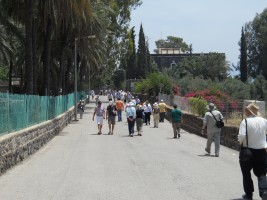
Pathway

Gate
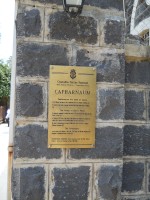
Sign

Garden

Ruins
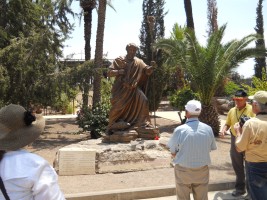
St. Peter
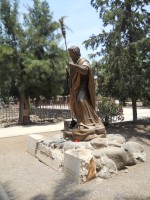
St. Peter
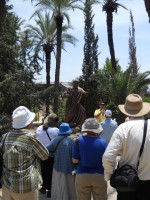
St. Peter
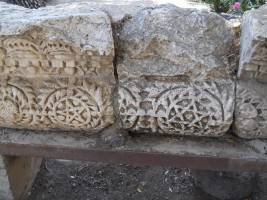
Cornice remnants
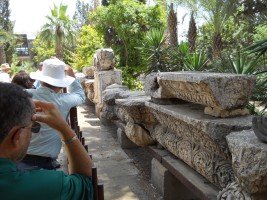
Cornice remnants
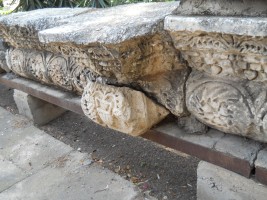
Cornice remnants
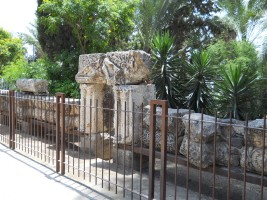
Cornice remnants
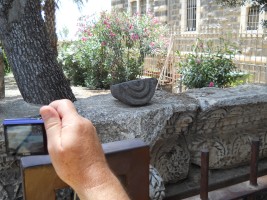
Minora?
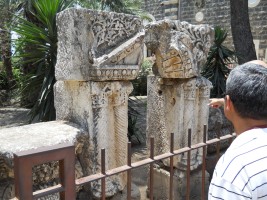
Cornice remnants

Cornice remnants
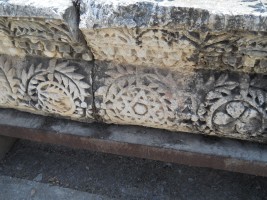
Magen David?
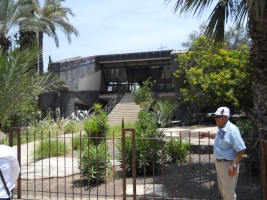
Capernaum
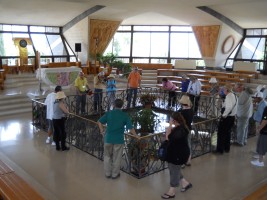
Capernaum
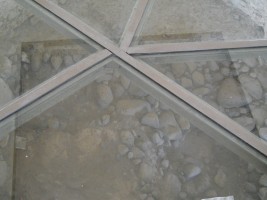
Capernaum
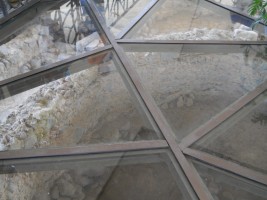
Capernaum
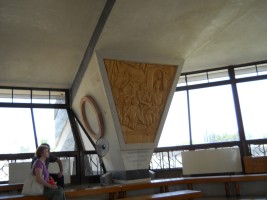
Capernaum

Capernaum

Capernaum
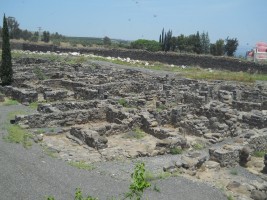
Capernaum
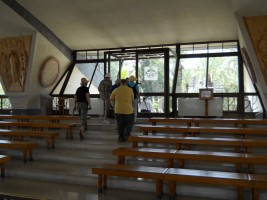
Capernaum

Capernaum
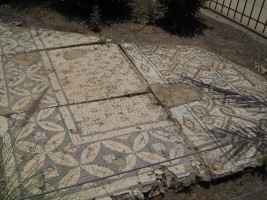
Byzantine mosaic
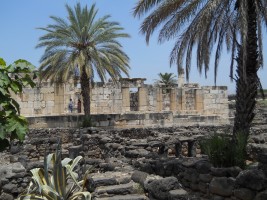
Synagogue ruin
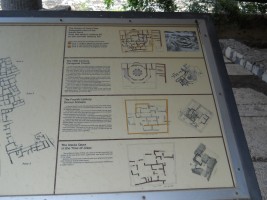
Site map
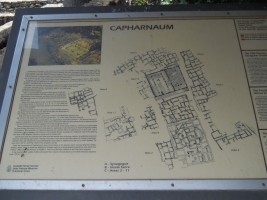
Site map
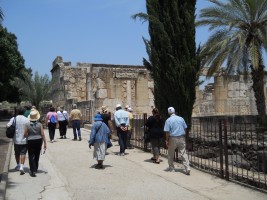
Synagogue
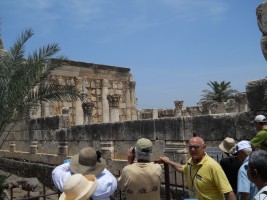
Synagogue
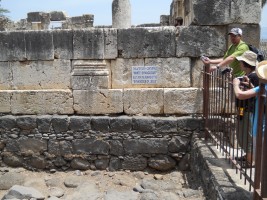
Remnant of synagogue from Jesus' time?
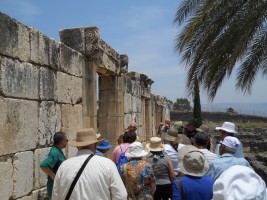
Synagogue

Capernaum
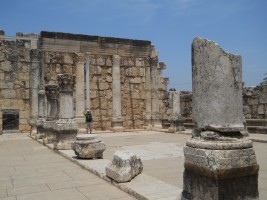
Synagogue
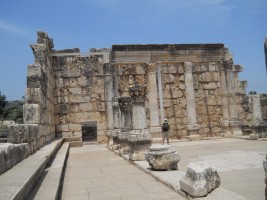
Synagogue
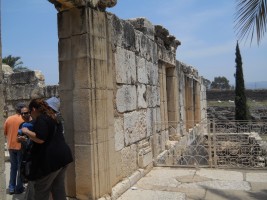
Synagogue
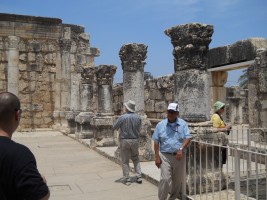
Synagogue
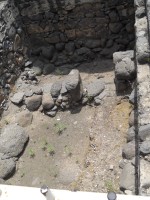
Capernaum

Synagogue
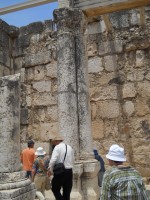
Synagogue
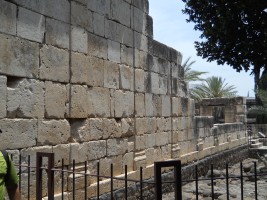
Synagogue
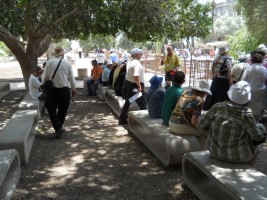
Discussion
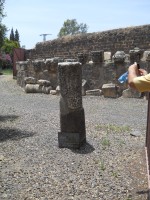
Capernaum
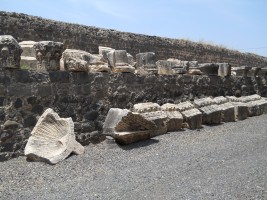
Capernaum
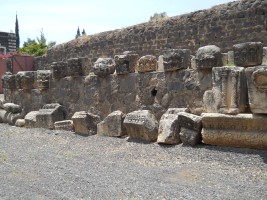
Capernaum
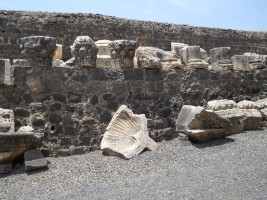
Capernaum
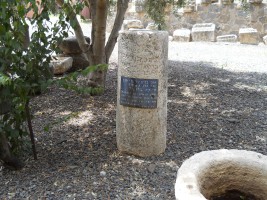
Capernaum
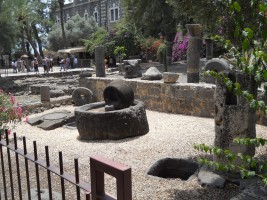
Olive press
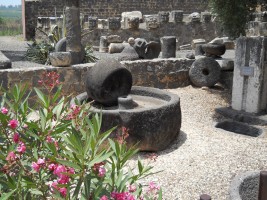
Olive press
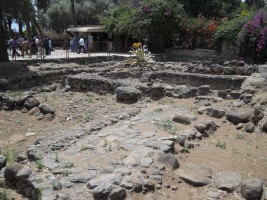
Capernaum
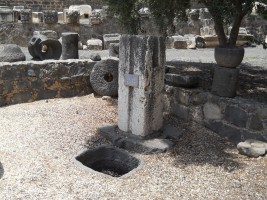
Olive press

Capernaum

License
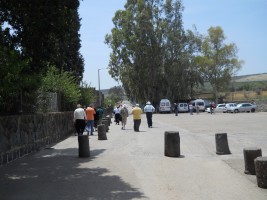
Leaving